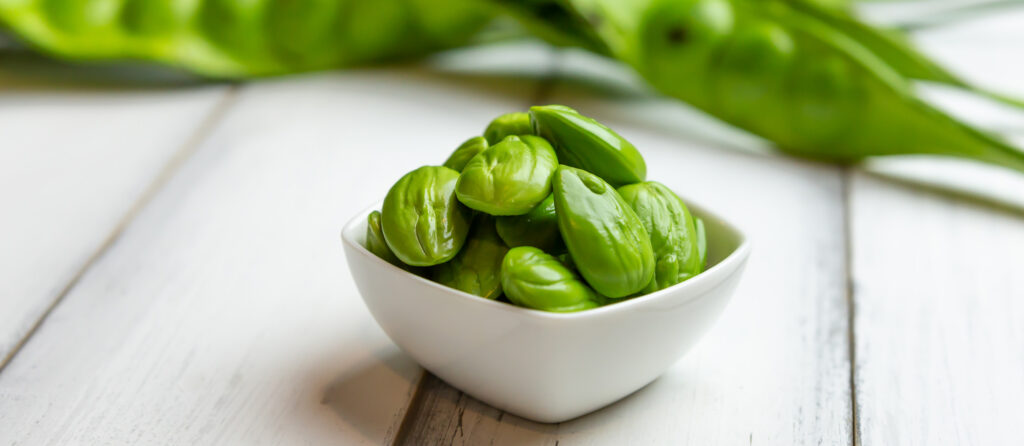Introduction
Asian beans are an essential part of the diverse and rich culinary traditions across Asia. They come in many varieties, each offering unique flavors, textures, and health benefits. From soybeans and mung beans to adzuki and black beans, these legumes are widely used in soups, curries, desserts, and fermented foods.
This article explores the different types of Asian beans, their nutritional benefits, culinary uses, and why they are gaining popularity worldwide.
Popular Types of Asian Beans
1. Soybeans (Glycine max)
Soybeans are one of the most versatile legumes in the world. Native to East Asia, they are used in various forms, including tofu, soy milk, soy sauce, and miso.
Nutritional Benefits:
- High in protein (ideal for vegetarians and vegans)
- Rich in isoflavones (which may help balance hormones)
- Good source of fiber, vitamins, and minerals
Common Uses:
- Tofu and soy milk production
- Fermented into miso and tempeh
- Used in soy sauce and edamame snacks
2. Mung Beans (Vigna radiata)
Mung beans are small, green legumes popular in Indian, Chinese, and Southeast Asian cuisine. They are commonly used in both savory and sweet dishes.
Nutritional Benefits:
- Low in calories but high in protein and fiber
- Rich in antioxidants, which help fight inflammation
- Contains folate, essential for prenatal health
Common Uses:
- Sprouted for salads and stir-fries
- Cooked into soups, dal, and porridges
- Ground into flour for Asian desserts
3. Adzuki Beans (Vigna angularis)
Adzuki beans are small, red beans that are widely used in Japanese and Chinese desserts. They have a naturally sweet flavor.
Nutritional Benefits:
- High in fiber, supporting digestion
- Packed with antioxidants, promoting heart health
- Contains protein, making it a great plant-based protein source
Common Uses:
- Sweet bean paste in Asian desserts
- Added to rice dishes for extra nutrition
- Used in soups and red bean porridge
4. Black Beans (Black Turtle Beans)
Black beans, often associated with Latin American cuisine, are also widely used in Asian cooking, particularly in Chinese and Korean dishes.
Nutritional Benefits:
- Excellent source of protein and fiber
- Rich in iron and magnesium
- May help regulate blood sugar levels
Common Uses:
- Fermented into black bean sauce for stir-fries
- Cooked into stews and rice dishes
- Used in vegetarian patties and fillings
5. Chickpeas (Garbanzo Beans)
Although often linked to Middle Eastern and Mediterranean cuisine, chickpeas are widely consumed in India and other parts of Asia.
Nutritional Benefits:
- High in plant-based protein and fiber
- Contains essential minerals like iron and zinc
- Supports weight management and heart health
Common Uses:
- Ground into flour for Indian snacks
- Cooked into curries (e.g., chana masala)
- Roasted as a crunchy snack
Health Benefits of Asian Beans
1. High in Plant-Based Protein
Asian beans are a valuable protein source, especially for vegetarians and vegans. They provide essential amino acids needed for muscle growth and overall health.
2. Rich in Fiber
Fiber is essential for digestion, and Asian beans are packed with it. Consuming fiber-rich foods can prevent constipation, regulate blood sugar levels, and promote gut health.
3. Support Heart Health
Many Asian beans contain antioxidants, flavonoids, and essential minerals that help lower cholesterol levels, improve blood circulation, and reduce the risk of cardiovascular diseases.
4. Aid in Weight Management
Due to their high protein and fiber content, beans keep you full for longer, reducing overall calorie intake and supporting weight management.
5. Packed with Vitamins and Minerals
Asian beans provide a wide range of vitamins and minerals, including iron, magnesium, folate, and potassium, essential for energy production, brain function, and overall well-being.
Culinary Uses of Asian Beans
In Traditional Dishes
- Soybeans – Used in miso soup, soy sauce, and tofu dishes.
- Mung Beans – Common in Indian dal, Chinese desserts, and sprout-based dishes.
- Adzuki Beans – Popular in red bean paste fillings for mochi and mooncakes.
- Black Beans – Used in Chinese black bean sauce and Korean stews.
- Chickpeas – A staple in Indian curries and snacks like chana chaat.
In Modern Cooking
- Added to salads, grain bowls, and Buddha bowls
- Used as a meat substitute in vegetarian recipes
- Blended into smoothies or protein shakes
- Baked into bean-based brownies and desserts
The Growing Popularity of Asian Beans Worldwide
With the rise of plant-based diets and an increasing awareness of health-conscious eating, Asian beans are gaining popularity worldwide. Their versatility, affordability, and nutritional benefits make them a great addition to any diet.
For more insights on food trends and global cuisines, visit Big Write Hook, a platform dedicated to storytelling and creative writing.
Where to Buy Asian Beans?
Asian beans are widely available in:
- Supermarkets and grocery stores
- Asian specialty stores and online retailers
- Health food stores focusing on plant-based products
If you’re looking for premium-quality Asian beans and other food products, check out GMRU, a trusted source for high-quality groceries.
Conclusion
Asian beans are a powerhouse of nutrition, flavor, and versatility. Whether you’re looking for a plant-based protein source, a high-fiber food, or simply new ingredients to explore in your cooking, these beans are an excellent choice. From traditional Asian recipes to modern fusion dishes, incorporating Asian beans into your diet can lead to a healthier and more flavorful culinary experience.
By exploring the different types, benefits, and uses of Asian beans, you can make informed choices about adding them to your diet while enjoying their rich and diverse flavors.

